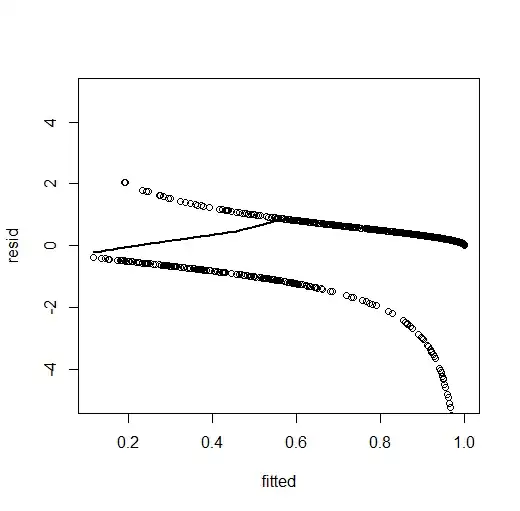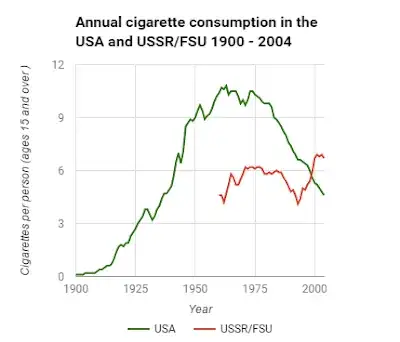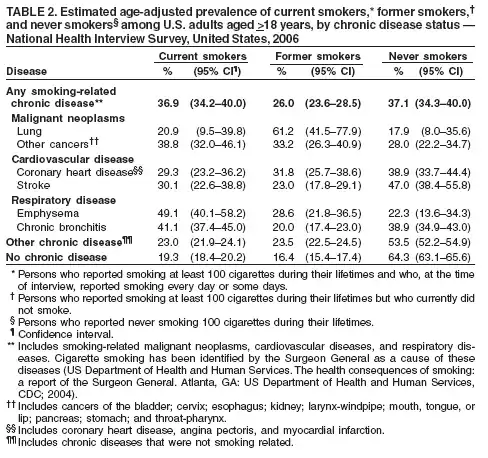On tobacco products one can often see the statistic that nine out of ten lung cancers are caused by smoking but is this number accurate?
I am sceptical about this stat for two reasons.
Firstly, if you compare cigarette consumption rates over time for the USA and Norway and compare them with male lung cancer rates you can construct the following chart. You can obtain cigarette consumption data for the US here and for Norway here and the cancer data for both countries from here.
In the USA it looks like 9 out of 10 lung cancers could very well be caused by smoking but in Norway it looks very doubtful because there is an awful lot of lung cancer for comparatively few cigarettes smoked. In the US the cause (cigarettes) comes before the effect (lung cancer) but in Norway the cause (cigarettes), seems to come after the effect (lung cancer). Which does not back up the hypothesis that smoking causes 9 out of ten lung cancers very well in the case of Norway.
In addition to the curiosity of Norway there is another problem because in a country such as the USA millions of people have been encouraged to quit smoking over decades and lung cancer rates have gone down. But in former soviet union countries millions of people have not been encouraged to quit smoking and as a result per capita cigarette consumption has been stable in these countries to this day.
So quite by accident, we have a massive experiment (billions of subject years) to see if encouraging millions of people over many decades to quit smoking makes any difference to lung cancer rates. It is arguably, I would guess, the biggest experiment into smoking and lung cancer ever. Here are male lung cancer for three countries the USA (population 325.7 million ), Russian Federation (population 144 million) and Ukraine (population 45 million).
Clearly, male lung cancer has declined in these countries in the same way as in the US but without a preceding decline in smoking.
Secondly, in the US, according to the following National Health Survey , 17.9% of lung cancer occurs in never smokers, table reproduced below and original can be found here.
In my mind, the figure of 17.9% of lung cancer that occurs in never smokers makes the nine out of lung cancers caused by smoking as untenable.
I would guess that to calculate this number all you really need to know is what percentage of the adult population are never smokers but I have found this number surprisingly elusive for the US. The closest I can find is in this study that states that in the US never smokers make up 22.2% of the population, current smoker 39.4%, former smoker 38.5%.
But this can not be right and I think the authors have swapped current smokers with never smokers and that the number of never smokers is really 39.4% and the number of current smokers is really 22.2%. This is quite unsatisfactory but I have found it easy to find numbers for current smokers but difficult to find numbers for never smokers.
So having given a few relevant epidemiological statistics (and hopefully interesting to readers) as to why the number of lung cancers caused by smoking may not be quite as high as nine out of ten my question is as follows:
Given the statistics that 17.9% of lung cancers occur in never smokers and never smokers make up 39.4% of a population how much lung cancer is really caused by smoking?





